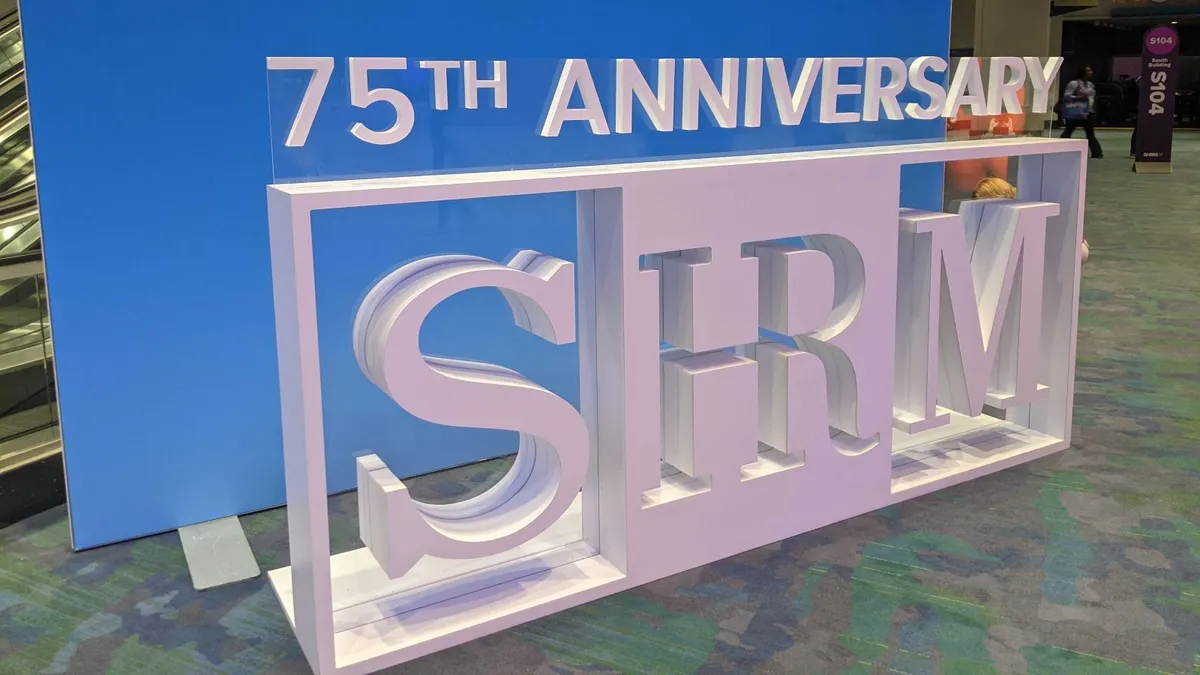While there’s still a small chance it could be blocked, the first step of the U.S. Department of Labor’s overtime final rule is set to go into effect Monday — raising the minimum salary threshold for overtime from $35,568 to $43,888.
Almost every workplace should be prepared with needed adjustments, but there are still a few last-minute actions HR should undertake if they haven’t to protect their organizations, Victoria Lipnic, partner at Resolution Economics and former EEOC commissioner, and Jonathan Segal, partner at Duane Morris LLP, said at a Monday panel at the Society for Human Resource Management’s annual conference.
1. When reviewing positions, ensure stated job duties are accurate
While the overtime rule only pertains to the minimum salary threshold, HR should use the change to review all aspects of an employee’s role, Segal said. Some employees may be currently misclassified, and the rule presents an opportunity to “clean up some of those positions where there may be gray [area] on the duties test.”
The “duties test” refers to the exemption from overtime pay provided for those in bona fide executive, administrative, professional and outside sales roles who meet certain tests regarding their job duties.
“Job titles do not determine exempt status,” DOL has clarified — highlighting a shortcut some employers may have mistakenly taken. “In order for an exemption to apply, an employee’s specific job duties and salary must meet all the requirements of the Department’s regulations.”
Lipnic and Segal suggested that employers take a second look at what workers are doing day to day. Reviewing job descriptions alone may not be sufficient.
While reclassifying may come with some risk — with employees coming back and asking why it’s happening when their job function hasn’t changed in the past week — HR professionals “always have that risk” when reclassifying workers, Lipnic said.
“But right now, you have opportunity,” she continued. “Because your answer is, ‘Because the Department of Labor’s making me do this by raising the salary threshold. And so we’ve reevaluated the job. We’ve changed the job description a little bit,’” she said.
2. Prepare workers whose exemption status will change
Employees being moved from exempt to nonexempt may be pleased to learn they’re eligible for additional compensation, but they are just as likely to be deflated to learn of new constraints on their flexibility.
“If you have to pay overtime, you have a lot of recordkeeping obligations … that you do not have for salaried employees,” Lipnic said. As a result, employees who may be used to working unusual hours or excessive hours will not be able to work as usual.
“The employee that, rather than coming in 9 to 5, some days comes in 7 to 3, because that way they can deal with child care … [or] elder care … that flexibility, absent permission from their manager, is now gone,” Segal said. “You have to make clear: No remote work unless there’s been authorization.”
The most difficult employees in managing this aspect of a transition from exempt to nonexempt are often the “best employees,” Segal said — those used to being workaholics and putting in hours around the clock. “Unless you’re prepared to pay them … you have to say ‘No’ and potentially [take] corrective action.”
3. Talk to your managers about expectations
Finally, just as transitioned employees need to be informed about what a conversion to nonexempt means, their managers also need to be trained on the new boundaries such a conversion presents for them.
Managers can’t just pick up the phone, call someone at home and say, “I’m working on this project and I can’t figure this out,” Segal said. “Because if they do that, that time is compensable.”
Managers’ “expectations about what they are getting from employees” need to change in the wake of a conversion, Lipnic said. “‘I know I can count on [that employee] — he’ll always work 60 hours a week.’ If suddenly [that worker] is now eligible for overtime, then that manager needs to adjust his or her expectation about that.”
The rule presents a new opportunity to introduce Fair Labor Standards Act training for managers, for those employers that don’t already implement it, Segal said.
Because the communication and training required can be extensive — and litigation can be “almost guaranteed” without such steps, according to Segal — raising salaries to keep workers exempt may be the easier route, he said. “If we can stretch a little to get someone in the salary [range], it may be worth doing.”























